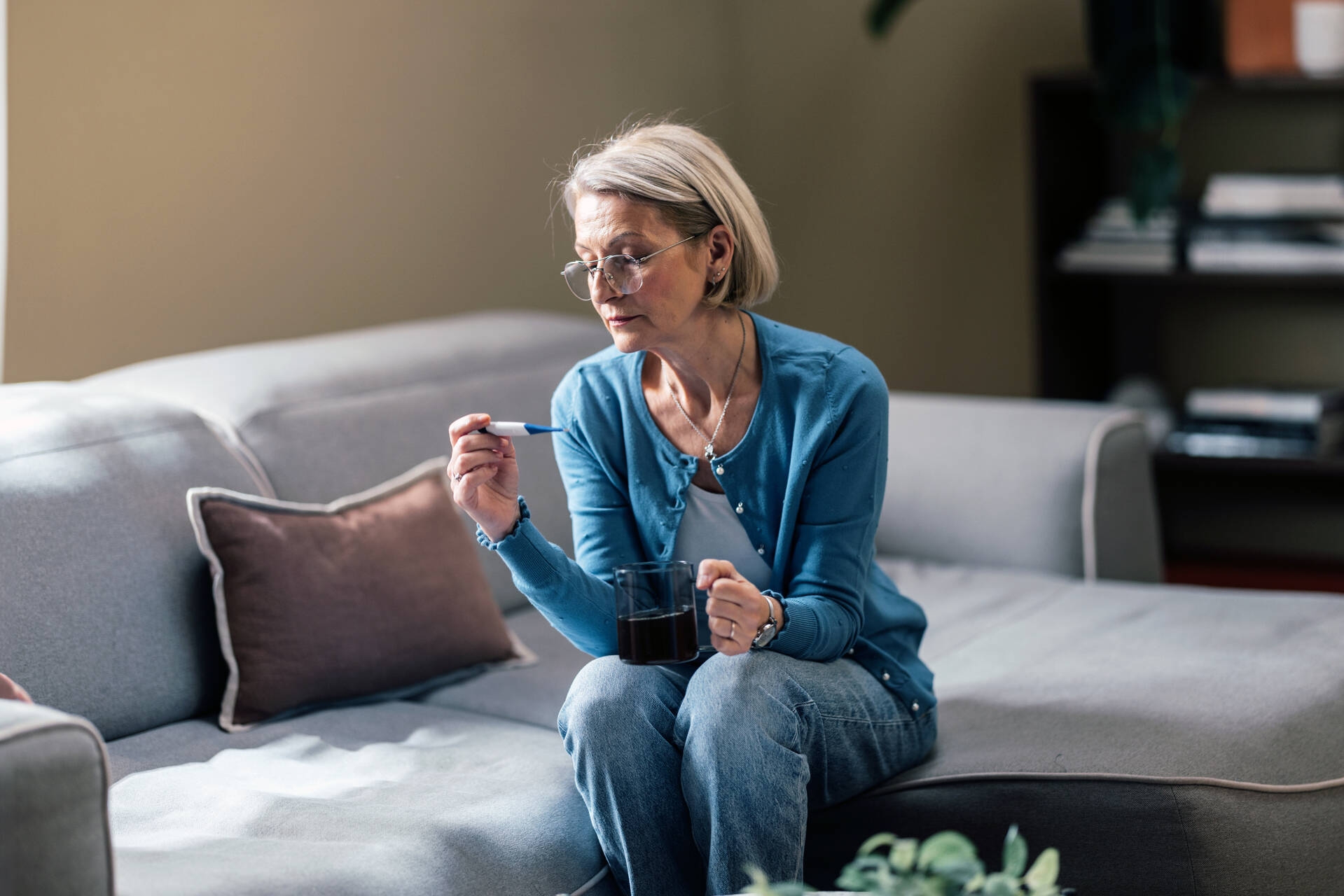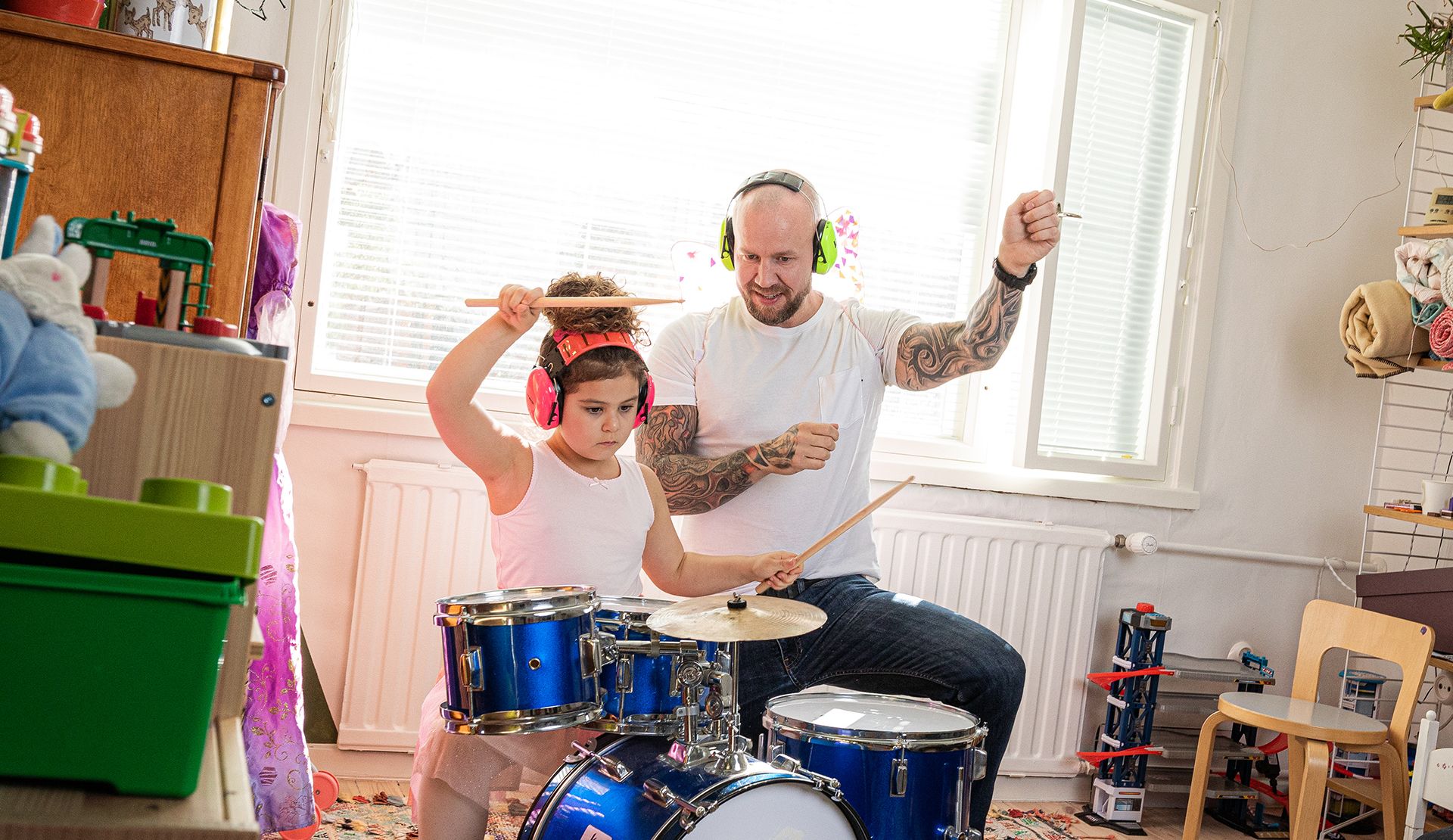
Lower abdominal pain in women
Specialist in the article

Lower abdominal pain in brief
- Most lower abdominal pain is mild and harmless and subsides on its own.
- When diagnosing lower abdominal pain, the most important part is to assess the urgency of treatment.
- See a physician if your lower abdominal pain is severe and worsening or if it is accompanied by other symptoms such as fever, nausea, bloody stools or vomiting, if your stomach is sensitive to touch or you are pregnant.
Symptoms of lower abdominal pain
The intensity and sensations of lower abdominal pain can vary greatly. The pain can be mild or severe, aching, sharp or shooting, or it may come and go. Lower abdominal pain often subsides on its own, but sometimes the pain may require further examination.
Pay attention to the following when monitoring lower abdominal pain:
- The effect of movement and rest on the pain; does the pain grow worse when moving or resting?
- Menstrual cycle; does the pain occur at a specific phase of the menstrual cycle?
- Abnormal bloody discharge or leucorrhoea.
- What is the pain like, how intense is the pain and is it getting worse?
- What does the pain feel like, is it sharp, aching, fluctuating, shooting or a feeling of pressure?
- What is the location of the pain, is it located on the right or left side of the body?
- Does the pain radiate to other areas, such as the back?
Lower abdominal pain on the left or right side
Sometimes, lower abdominal pain may be localised to only one side of the body. This may indicate that the cause of the pain is located on the same side as the pain. Pain in the lower left-hand side of the abdomen may be caused by inflammation of pouches in the large intestine, also known as diverticulitis, and pain in the lower right-hand side of the abdomen may be a sign of appendicitis.
Lower abdominal pain during pregnancy
The early stages of pregnancy usually involve mild pains in the lower abdomen, but pain may also be a sign of an ectopic pregnancy. If the pain is severe or accompanied by bleeding, an ultrasound is always necessary to assess the pregnancy.
When should you see a physician for lower abdominal pain?
If the lower abdominal pain is severe or if it is accompanied by symptoms suggestive of, for example, abdominal inflammation or internal bleeding, you should seek urgent medical attention. The symptoms may also be caused by a gynaecological or other abdominal tumour that requires urgent treatment.
Seek urgent medical attention if your lower abdominal pain is accompanied by the following symptoms:
- fever
- nausea or vomiting for several days
- blood in stool or in vomit
- the abdomen is sensitive to the touch
- the pain continues for several days
- you are pregnant
- your abdomen or vagina was injured before the pain started
Examining lower abdominal pain
When diagnosing lower abdominal pain, the most important part is to assess the urgency of treatment. Your gynaecologist will start by discussing your symptoms and possibly ask other questions related to your health and the medicines you are taking.
In order to determine the cause of the pain, a gynaecological examination is performed, including a transvaginal ultrasound. The ultrasound provides a clear image of the uterus, ovaries and the surrounding areas. The ultrasound can also help discover any cysts or tumours in the ovaries or fibroids in the uterus and examine various pregnancy-related issues.
When an inflammation is suspected, physicians often order chlamydia, gonorrhoea, CRP and urine tests. If there is a chance of pregnancy, a pregnancy test is also performed.
A Pap smear is rarely necessary for acute pain in the lower abdomen but can be ordered in the event of a long-term ailment if the previous smear test was taken more than 1–2 years ago.
Unclear cases may sometimes call for an MRI scan of the lower abdomen.
If the pain does not seem like a solely gynaecological issue, the gynaecologist cooperates with other specialists to find out the cause.
Treating lower abdominal pain
The correct treatment of lower abdominal pain depends on the cause of the pain. The likely cause of pain in the lower abdomen is usually discovered at the first appointment and the best treatment can be started without delay. Sometimes, however, the pain or the symptoms may require emergency care.
Prices for appointments with specialists, such as gynaecologists, dermatologists, cardiologists, orthopaedists and ophthalmologists, can be found in our appointment booking service.
| Service | Price estimate |
|---|---|
| Appointment with a specialist, 20 min Price per appointment. | from 99,80 € Without Kela reimbursement from 129,80 € |
| Appointment with a specialist, 30 min Price per appointment. | from 114,80 € Without Kela reimbursement from 144,80 € |
| Appointment with a specialist, 45 min Price per appointment. | from 142,80 € Without Kela reimbursement from 172,80 € |
| Gynaecologist's appointment, 20 min | from 109,80 € Without Kela reimbursement from 139,80 € |
| Gynaecologist's appointment, 30 min | from 114,80 € Without Kela reimbursement from 144,80 € |
| Dermatologist's appointment, 20 min | from 117,70 € Without Kela reimbursement from 147,70 € |
| Dermatologist's appointment, 30 min | from 127,80 € Without Kela reimbursement from 157,80 € |
| ENT doctor's appointment, 20 min | from 112,80 € Without Kela reimbursement from 142,80 € |
| ENT doctor's appointment, 30 min | from 133,80 € Without Kela reimbursement from 163,80 € |
| Paediatrician's appointment, 20 min | from 115,20 € Without Kela reimbursement from 145,20 € |
| Paediatrician's appointment, 30 min | from 134,80 € Without Kela reimbursement from 164,80 € |
| Orthopaedist's appointment, 20 min | from 111,80 € Without Kela reimbursement from 141,80 € |
| Orthopaedist's appointment, 30 min | from 133,80 �€ Without Kela reimbursement from 163,80 € |
| Appointment with a psychiatrist, 30 min Price per appointment. | from 122,80 € Without Kela reimbursement from 157,80 € |
| Appointment with a psychiatrist, 45 min Price per appointment. | from 122,80 € Without Kela reimbursement from 159,80 € |
| Appointment with a psychiatrist, 60 min Price per appointment. | from 140,80 € Without Kela reimbursement from 180,80 € |
| Ophthalmologist's appointment, 30 min | from 127,80 € Without Kela reimbursement from 157,80 € |
| Ophthalmologist's appointment, 45 min | from 138,80 € Without Kela reimbursement from 168,80 € |
Gynaecology-related problems
Endometriosis
A gynaecological disease in which tissue that resembles the endometrial mucosa exists outside the uterus.
Ovarian cyst
An ovarian fluid-filled sac is often harmless and asymptomatic, but may sometimes require surgery.
Pelvic inflammatory disease
Abdominal pain, foul-smelling vaginal discharge and fever.
Urinary tract infection
A need to urinate frequently and a burning sensation or pain when urinating.
human papilloma virus (HPV)
a good tendency to heal, but it should be monitored so that the infection does not persist and progress to cancer.
Frequently asked questions about lower abdominal pain
Lower abdominal pain in women can be caused by various conditions, such as gynaecological diseases, bowel disorders or urinary tract infections.
The most common causes of lower abdominal pain in women are:
- menstrual or ovulation pain
- endometriosis
- infection such as infections of the uterus, vagina or urinary tract, inflammation of pouches in the large intestine (diverticulitis) or appendicitis
- sexually transmitted disease such as chlamydia
- ovarian cyst or ovarian torsion
- uterine fibroids (growths in the uterus or ovaries)
- ectopic pregnancy
- miscarriage
- gastrointestinal disorders such as irritable bowel syndrome (IBS)
- sequelae of gynaecological procedures (e.g. IUD insertion or gynaecological surgery)
Pain in the lower left-hand side of the abdomen may be caused by inflammation of pouches in the large intestine, also known as diverticulitis, and pain in the lower right-hand side of the abdomen may be a sign of appendicitis.
Pain can sometimes be felt not only in the lower abdomen, but also in the upper abdomen. This may indicate that the pain is caused by something other than a gynaecological condition. Pain in the upper abdomen may result from acid reflux or gallstones. Sometimes, spinal diseases may cause radiating pain in the abdominal area. It is advisable to consult a physician for a correct diagnosis.
Lower abdominal pain is dangerous if it is accompanied by bleeding, fever, nausea or vomiting, or if the pain is sudden and very severe. If you have these symptoms, please seek urgent medical attention.
Yes, lower abdominal pain can be one of the symptoms of pregnancy, especially in early pregnancy. If you suspect that you are pregnant and have lower abdominal pain, it is advisable to take a pregnancy test and, if necessary, consult a physician for further examinations and advice.
The duration of lower abdominal pain can vary greatly depending on the cause. Mild pain, such as menstrual pain, can last from a few hours to a few days. If the pain is caused by a more serious condition, such as an infection or a gynaecological disease, it may last longer and require medical treatment.


